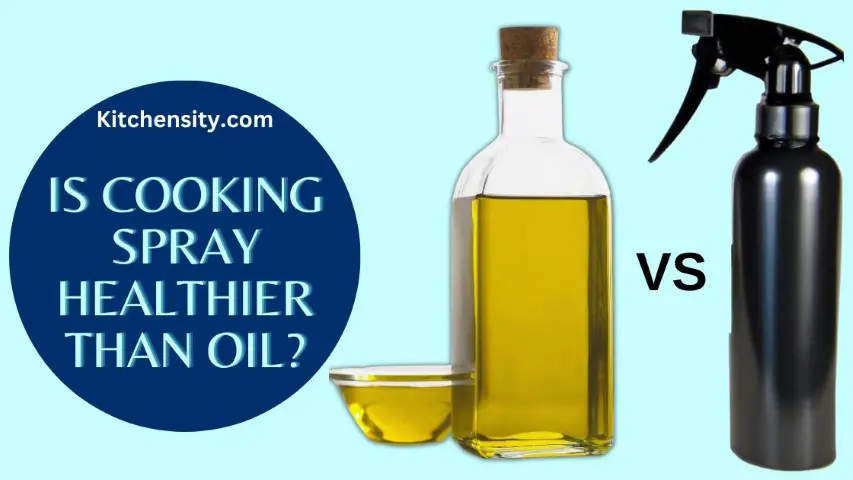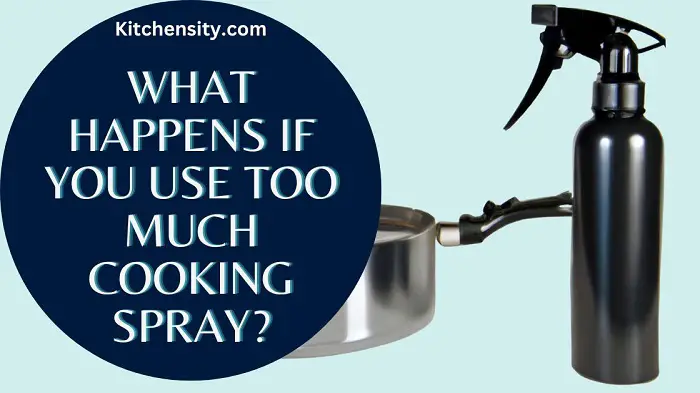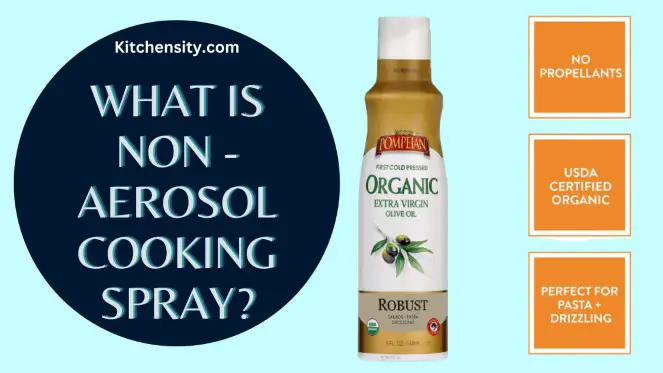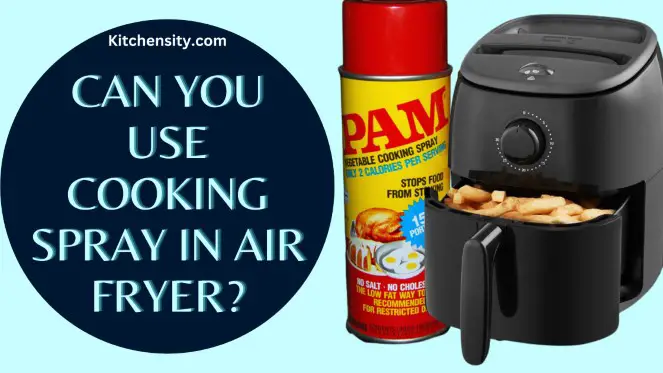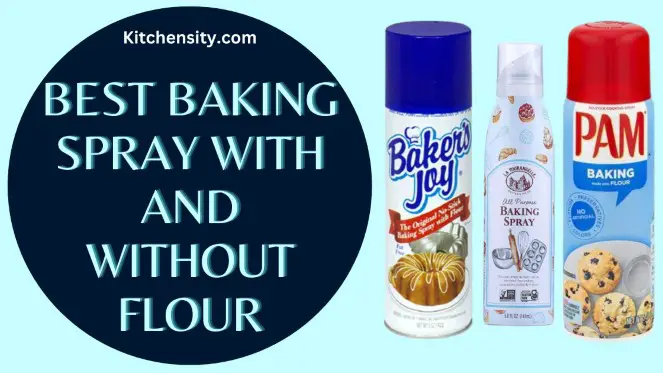Cooking sprays are popular kitchen tools that make it easy to cook and bake without the mess and hassle of traditional cooking oils and greases.
One of the most popular brands of cooking spray is Pam, which has been around for over 60 years.
It is made with a blend of oils and lecithin, which is a natural emulsifier. The product is designed to prevent food from sticking to cookware, making it easier to cook and clean up after meals.
However, some people have raised concerns about the ingredients in Pam, specifically whether it contains butane or any propellants.
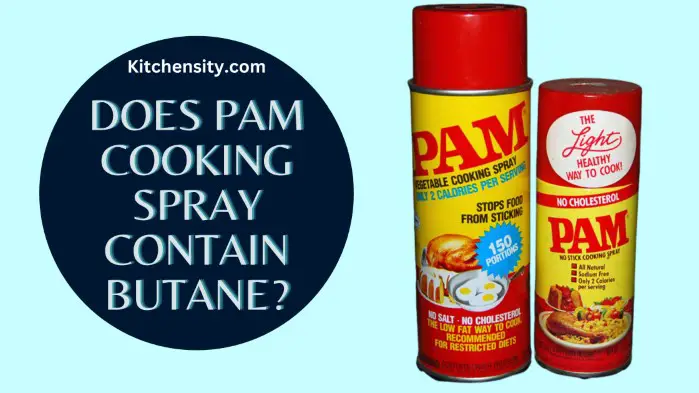
So in this article, we will answer this question and provide you with all the information you need to make an informed decision about using Pam in your kitchen.
Table of Contents
- 1 Does Pam Cooking Spray Contain Butane?
- 2 Is Butane Safe?
- 3 Does All Cooking Spray Contain Butane?
- 4 Role Of Propellants In Cooking Sprays
- 5 Safety Precautions
- 6 What Are The Alternatives To Pam Cooking Spray?
- 7 Final Verdict
- 8 You May Also Like
- 9 FAQs
- 9.1 Is Butane The Only Propellant Used In Cooking Sprays?
- 9.2 Can Inhaling Butane From Cooking Spray Be Harmful To Your Health?
- 9.3 Is Pam’s Cooking Spray Flammable?
- 9.4 Can Pam Cooking Spray Be Used On Non-Stick Surfaces?
- 9.5 Can Pam Cooking Spray Be Used In The Oven?
- 9.6 Are There Any Health Risks Associated With Using Cooking Spray?
Does Pam Cooking Spray Contain Butane?
Yes, Pam cooking sprays do contain butane but with a different molecular formula which is safe to use. Instead, it contains isobutane which is a propellant similar to butane but has slightly different chemical and physical properties.
Sometimes propane is also used in the sprays and both of them are used commonly in aerosol products because they are safe and effective propellants.
They help the cooking spray come out of the can in a fine mist, making it easier to apply to your food and cooking surfaces.
However, it is important to note that butane is not an ingredient in Pam Cooking Spray. Instead, it is used in the manufacturing process to create the spray.
Also Read – Kirkland Canola Oil Cooking Spray Review
Is Butane Safe?
While the idea of using gas like butane in cooking spray might sound concerning, it is important to understand that butane is actually a very common and safe ingredient in many household and personal care products.
Butane is used in many types of aerosol sprays, such as hairspray, deodorant, and air fresheners. When used correctly, butane is safe for both people and the environment.
However, it is important to follow the safety instructions on the label when using cooking spray or any other aerosol product.
This includes not spraying near an open flame or heat source and avoiding inhalation of the spray.
It is also important to store aerosol cans in a cool, dry place away from sources of heat and flame.
Also Read – Best Cooking Sprays For Eggs
Does All Cooking Spray Contain Butane?
No, not all cooking sprays contain butane or other propellants. The use of butane or propellants in cooking sprays varies depending on the brand and formulation.
While many cooking sprays do utilize propellants like butane, isobutane, or propane to create a fine mist for even distribution, there are also alternatives available that do not contain these propellants.
- Some cooking sprays use alternative propellants such as organic cane alcohol or other natural substances.
- These alternative propellants aim to provide the same functionality of creating a fine mist without the use of butane or similar compounds.
If you have concerns about using cooking sprays with propellants like butane, you can explore options that specifically mention being propellant-free or those that use alternative propellants.
Reading the product label or conducting research on different brands will help you identify cooking sprays that align with your preferences and requirements.
Also Read – What Can I Use Instead Of Cooking Spray?
Role Of Propellants In Cooking Sprays
Propellants play a crucial role in cooking sprays by facilitating the release and dispersal of the product in a fine mist.
They are responsible for propelling the liquid mixture out of the can, ensuring an even distribution over the food and cooking surfaces.
Here are the roles of propellants:
- Dispersion Of The Product:
- Cooking sprays typically contain a mixture of oils and other ingredients that provide a non-stick coating.
- However, these ingredients are in liquid form and need a mechanism to be evenly dispersed over the food and cooking surfaces. This is where propellants come into play.
- Propelling Force:
- Propellants, such as butane, isobutane, propane, or organic cane alcohol, are gases or volatile substances that exert pressure inside the aerosol can.
- When the valve of the can is opened, the pressure of the propellant pushes the liquid mixture through the nozzle, creating a fine mist that is easily spreadable.
- Fine Mist Formation: The propellant’s force helps break down the liquid mixture into tiny droplets, forming a mist. This mist ensures that the cooking spray is evenly distributed, coating the food or cooking surfaces with a thin layer of oil or non-stick coating.
- Even Coverage: The fine mist created by the propellant enables the cooking spray to cover a larger surface area and reach difficult-to-reach corners of cookware or bakeware. This helps prevent food from sticking and facilitates an even browning or cooking process.
- Convenience And Control: The use of propellants in cooking sprays provides convenience and control to users. The aerosol can design allows for precise application, ensuring that the desired amount of spray is used without excessive pouring or waste.
It’s important to note that propellants like butane or isobutane are used in small quantities and are typically mixed with the cooking spray ingredients.
They are safe for consumption when used according to the instructions provided on the can.
Also Read – How To Remove Cooking Spray Residue?
Safety Precautions
When using cooking sprays, it is essential to prioritize safety to prevent any potential hazards.
Here are some safety precautions to take when using cooking sprays:
- Avoid Spraying Near Open Flames Or Heat Sources:
- Cooking sprays contain flammable propellants, making them highly flammable themselves.
- It is crucial to never spray cooking spray near open flames, hot surfaces, stovetops, grills, or any other heat sources.
- This precaution helps prevent the risk of fire or flare-ups.
- Ensure Proper Ventilation: Adequate ventilation is important when using cooking sprays to prevent inhalation of the spray and the buildup of fumes. Always use cooking sprays in a well-ventilated area or turn on the kitchen exhaust fan to remove any aerosol fumes.
- Keep Away From Children And Pets: Store cooking sprays in a secure place that is out of reach of children and pets. The pressurized canisters should not be handled by unsupervised children. It is essential to keep them away from the reach of curious hands or paws.
- Read And Follow The Instructions: Before using any cooking spray, carefully read and follow the instructions provided on the can. Different brands may have specific usage guidelines or precautions. Adhering to the manufacturer’s instructions ensures safe and effective use.
- Store Properly: After use, store cooking sprays in a cool, dry place away from direct sunlight, heat sources, or flames. High temperatures can increase the pressure inside the can and pose a potential safety risk. Avoid exposing the can to extreme temperatures or storing it in the vicinity of an oven or stove.
- Avoid Puncturing Or Incinerating The Can: Cooking spray cans are pressurized containers and should never be punctured, incinerated, or exposed to extreme heat. Doing so can cause the can to burst or explode, leading to serious injuries or property damage.
- Use In Moderation:
- While cooking sprays are convenient for providing a non-stick surface, it is essential to use them in moderation.
- Excessive application of cooking spray can lead to a buildup of residue on cookware or bakeware, which may be difficult to clean and affect the performance of non-stick coatings.
Also Read – What Cooking Spray is Best for Air Fryer?
What Are The Alternatives To Pam Cooking Spray?
If you are uncomfortable using a cooking spray that contains butane or any other propellants, there are alternatives available.
Some other non-stick cooking sprays, such as Spectrum Naturals, do not use butane as a propellant, instead, they use organic cane alcohol.
Alternatively, you could use traditional cooking oils or fats to lubricate your cookware. These options may not be as convenient as using a cooking spray, but they are still effective at preventing food from sticking.
Also Read – Cooking Spray That Doesn’t Leave Residue
Final Verdict
In conclusion, Pam Cooking Spray does contain butane, but this ingredient is used as a propellant in the manufacturing process and is not an ingredient in the spray itself.
While butane is a safe and common ingredient in many household and personal care products, it is important to follow safety instructions when using cooking spray or any other aerosol product.
If you are uncomfortable using a cooking spray that contains butane or any propellants, there are always alternatives available in the market.
You May Also Like
- Best Zero-Calorie Cooking Spray
- Best Cooking Sprays For Gas Grills
- Best Cooking Spray For Silicone Molds
- What Happens If You Use Too Much Cooking Spray?
- Baking Spray Vs Cooking Spray
- Best Baking Spray With Flour And Without Flour
- Is Cooking Spray Healthier Than Oil?
- What Pans Can You Use Cooking Spray On?
FAQs
-
Is Butane The Only Propellant Used In Cooking Sprays?
No, butane is not the only propellant used in cooking sprays. Other propellants include propane, isobutane, organic cane sugar, etc.
-
Can Inhaling Butane From Cooking Spray Be Harmful To Your Health?
Inhaling butane from a cooking spray can be harmful to your health if done in excessive amounts. It is important to use cooking spray in a well-ventilated area and avoid inhaling the spray.
-
Is Pam’s Cooking Spray Flammable?
Yes, Pam’s cooking spray is flammable. It contains a propellant that is flammable, so it’s important to use it safely and responsibly.
-
Can Pam Cooking Spray Be Used On Non-Stick Surfaces?
Yes, Pam cooking spray is safe to use on non-stick surfaces. However, be sure to follow the instructions on the can and avoid using too much spray, as this can cause a buildup of residue on your non-stick surfaces.
-
Can Pam Cooking Spray Be Used In The Oven?
No, Pam cooking spray should not be used in the oven. It is intended for use on stovetops and grills only.
-
Are There Any Health Risks Associated With Using Cooking Spray?
There are no significant health risks associated with using cooking spray, as long as it is used in moderation and according to the safety instructions on the label.
Katrina Smith is a seasoned expert with over 25 years of experience in all things related to cooking and the kitchen. As an avid cook and kitchen enthusiast, she is passionate about sharing her knowledge and expertise on cookware, kitchen appliances, kitchen tips, and kitchen staples.
Through her articles and reviews, Katrina aims to inspire and help others improve their cooking skills, experiment with different ingredients, and invest in quality cookware and appliances.

